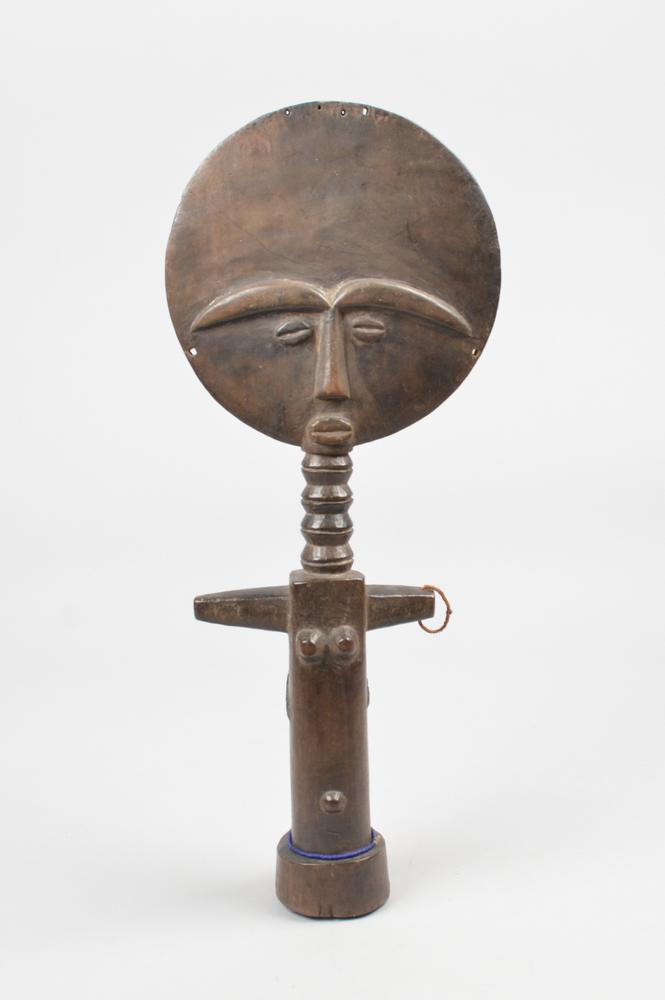Origins of Kente:
The vibrant tapestry of Kente finds its epicenter in the quaint village of Bonwire, Ghana, where legends intertwine with history to shape the origins of this revered craft. According to Asante mythology, the cunning Ananse the Spider, renowned for his skill and guile, wove a web of unparalleled intricacy in the jungle. It was here that Nana Koragu and Nana Ameyaw, brothers and adept weavers, stumbled upon Ananse’s mesmerizing creation. Enchanted by its immaculate beauty, the brothers meticulously studied the web before returning to their village to embark on their own weaving journey, birthing what would later become known as Kente.
Although most mainstream texts attribute Kente to the Ashanti, an alternate view is that Kente originated with the Ewe people of Ghana who then passed it on to the Ashanti. While the roots of textile production among the Akan and Ewe peoples date back to ancient times, the emergence of Kente cloth in its current form can be traced to the seventeenth century A.D. It was during this time that Chief Oti Akenten, a prominent figure in the Asante Empire, played a pivotal role in shaping the trajectory of Kente. Chief Akenten, whose name lends itself to the very essence of Kente (“basket” in Twi), established trade routes from the Middle and Far East, introducing a myriad of commodities including dyes, gems, and silk fabric to the Asante Empire. Inspired by these newfound materials, Chief Akenten commissioned the creation of a new cloth, destined for royal ritual attire.

However, it wasn’t until 1697, under the reign of King Osei Tutu of the Ashanti Kingdom, that Kente weaving began to flourish as a revered craft. King Osei Tutu, recognizing the artistic potential and cultural significance of Kente, embarked on a mission to elevate it to a symbol of prestige and royalty within his kingdom. With meticulous care, he handpicked skilled weavers from neighboring towns and villages, sending them on a transformative journey to the Ivory Coast to undergo specialized training in strip weaving.
Under the tutelage of master weavers, these artisans immersed themselves in the intricate techniques of Kente production, mastering the art of weaving and unlocking the secrets of its complex patterns and color combinations. Upon their return to the Ashanti Kingdom, these master weavers became the custodians of Kente, weaving cloth exclusively for the royal court. With each thread meticulously crafted and every pattern imbued with cultural significance, Kente became more than just a fabric; it became a symbol of regal splendor and artistic mastery within the Ashanti Kingdom.
As Kente adorned the shoulders of royalty and graced the halls of power, its reputation transcended borders, captivating hearts and minds both within Ghana and beyond. From its humble beginnings in the village of Bonwire to its esteemed position as a global symbol of African heritage and identity, the journey of Kente embodies the resilience, creativity, and cultural richness of the Ghanaian people.

Fashion and Cultural Significance:
Kente, a fabric that originated as a symbol of royal prestige in the Ashanti Kingdom of Ghana, has since transcended its regal beginnings to become a global fashion icon. Renowned for its distinctive patterns and vibrant colors, Kente cloth holds a special place in the hearts of people worldwide, symbolizing African heritage and identity.
Originally worn exclusively for ceremonial purposes, Kente has evolved to adorn modern fashion runways and everyday attire, serving as a powerful expression of cultural pride and tradition. The manner in which Kente is worn reflects not only individual style but also societal norms and customs, with differences observed in how men and women wear the cloth. Men typically drape a single piece of Kente cloth around their bodies, leaving the right shoulder and hand uncovered, while women may opt for a single large piece or combine smaller pieces based on various factors such as age, marital status, and social standing.

The cultural significance of Kente extends far beyond its aesthetic appeal. For many African-Americans, Kente holds deep-rooted connections to their history and struggle for equality. It gained prominence during the Civil Rights and African Decolonization Movements, symbolizing Black politics and the assertion of African heritage and dignity. Kwame Nkrumah’s symbolic gesture of wearing Kente during his meeting with President Eisenhower at the White House in 1958 further propelled the cloth into the global spotlight, cementing its association with social justice and empowerment.
Today, Kente continues to serve as a potent symbol of cultural pride and unity, both within Ghana and beyond. From Ghanaian leaders proudly wearing Kente to signify national pride to Black American college students donning Kente stoles during graduation ceremonies, the cloth embodies resilience, heritage, and identity. Its vibrant colors and intricate patterns speak volumes, weaving together narratives of struggle, triumph, and the enduring spirit of the African diaspora.

Patterns and Techniques:
At the core of Kente’s allure lies its intricate patterns, meticulously woven with precision and infused with profound symbolism. Crafted through labor-intensive processes, Kente weaving demands meticulous attention to detail and a deep understanding of traditional techniques. Each pattern is meticulously handcrafted by skilled weavers, who deftly interlace vibrant threads to create mesmerizing designs that captivate the senses.
Akan Kente, celebrated as an emblem of African cultural heritage, boasts dazzling multicolored patterns featuring geometric shapes and bold designs. Notably, adweneasa Kente showcases weft designs intricately woven into every available block of plain weave, demonstrating the masterful skill of the weavers. Beyond its visual appeal, the significance of Kente extends to its names, often derived from proverbs, historical events, prominent figures, and the natural world, adding layers of meaning and depth to each cloth.

The intricate process of Kente weaving encompasses various meticulous steps, each crucial to the creation of these extraordinary textiles. From yarn preparation and warping to beaming, heddling, and weaving, every stage requires careful precision and expertise. Through these time-honored techniques, Kente weavers continue to preserve and celebrate their cultural heritage, weaving narratives of tradition, identity, and artistic excellence into each meticulously crafted masterpiece.

Symbolism Encoded in Kente:
Kente transcends its visual allure to become a profound repository of cultural symbolism and tradition. Every thread, color, and motif woven into Kente carries profound significance, offering a window into Ghanaian values, beliefs, and collective experiences. From symbols denoting royalty and spirituality to expressions of love and unity, each element of Kente weaves a narrative deeply rooted in Ghanaian heritage.
A notable aspect of Kente lies in its ability to convey messages and meanings through its intricate patterns and vibrant hues. Each Kente design is bestowed with a name, often inspired by dreams or spiritual insights of the weavers, or granted by chiefs and elders for commissioned designs. This practice underscores the reverence with which Kente is regarded, with each design registered and copyrighted to safeguard Asante heritage. These designs encapsulate diverse facets of life, offering insights into cultural narratives and historical events.

For instance, the “Fatima Nkrumah” design, named after Ghana’s first President Kwame Nkrumah’s Egyptian wife, Fatima, symbolizes unity and the rejection of racial discrimination. The “Zig-zag” motif represents life’s journey, characterized by twists and turns, signifying the challenges and obstacles encountered along the way. Meanwhile, “Mako Maso Adeae,” translating to “my heart’s desire,” conveys a non-verbal declaration of love, traditionally left at a lady’s doorstep as a heartfelt gesture. These designs exemplify the nuanced meanings embedded within Kente, reflecting both personal sentiments and broader cultural values.
Furthermore, the colors adorning Kente cloths carry their own symbolic significance, enriching the tapestry of meaning woven into each fabric. Yellow evokes notions of royalty and beauty, while red symbolizes the blood of ancestors and political significance. Green represents fertility and growth, blue embodies peace and harmony, and pink exudes love and happiness. From orange symbolizing wealth and joy to gold signifying royalty and high status, each color contributes to the intricate symbolism of Kente, offering a vibrant expression of Ghanaian culture and heritage.

Conclusion:
In a world characterized by rapid change and globalization, Kente remains a timeless emblem of tradition, craftsmanship, and cultural heritage. From its humble beginnings in the Ashanti Kingdom to its prominence on the global stage, Kente continues to captivate hearts and minds with its beauty, symbolism, and historical significance.
As we unravel the intricate tapestry of Kente, we uncover not just a fabric but a living legacy, woven with threads of tradition, creativity, and the spirit of the Ghanaian people. Through its origins, fashion influence, intricate patterns, and profound symbolism, Kente stands as a symbol of cultural pride, resilience, and identity, enriching the world with its vibrant colors and timeless elegance.


